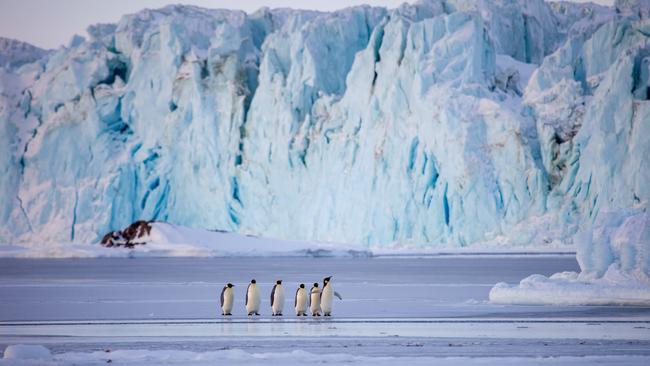Antarctic land-clinging ice shrinks to record low, scientists claim
The ice that clings to Antarctica‘s coast has crashed to a record low extent according to a new report, with scientists claiming ’catastrophic consequences’ if this becomes a long-term trend.

The ice that clings to Antarctica‘s coast has crashed to a record low extent according to a new report, with scientists claiming ’catastrophic consequences’ if this becomes a long-term trend.
A study by 23 scientists globally says landfast ice – which clings to the coast, protecting glaciers and offering a landing for humans and breeding habitat for emperor penguins – shrank to a record low in March 2022.
Based on satellite images, the landfast ice cover in March 2022 dropped to 123,200 sqkm, well below its normal March range of 168,600 to 295,200 sqkm.
In the Ross Sea, there was a complete loss of multi-year landfast ice, while its loss was widespread across much of East Antarctica.
“If the recent crash in landfast ice represents a long-term trend, there are potentially catastrophic consequences for Antarctic coastal geographies and ecosystems, with knock-on effects throughout the world,” said lead author Alex Fraser.

These could include a decline in production of plankton – a key food for krill, which underpins life in the Southern Ocean.
The latest study’s claims contrast with findings by metrologist Stefano Di Battista – which were backed up at the time by NASA’s global modelling and assimilation office – that Antarctica saw its coldest period since 1957 in April to September 2021.
US National Snow and Ice Center data showed in that same time that the freeze in Antarctica pushed sea ice levels around the continent to their fifth highest level on record.
As well, landfast ice distribution strongly influences the size of polynyas, “hot spots” of sea ice formation which drive the formation of cold, salty, dense Antarctic “bottom water”.
This water in turn drives global ocean circulation. “A slowdown in global ocean circulation would lead to a redistribution of the heat across the surface of the earth,” said Dr Fraser, glaciologist with the Australian Antarctic Program Partnership. “You start getting freezing conditions in places that have ordinarily had heat supplied to them.”
Until now, much of the Antarctic ice research effort has focused on the ice sheet and sea ice, rather than landfast ice, also known as fast ice. “It’s been a missing piece of the puzzle,” said Dr Fraser, who is based at Hobart’s Institute for Marine and Antarctic Studies.
With reliable satellite data for landfast ice stretching back only to about the year 2000 – aside from limited 1960s declassified spy satellite images – there was a need for more research and monitoring.
It was “not at all, right now” possible to definitively attribute the landfast ice changes to climate change. “Some of the challenge there is that fast ice responds differently in differently regions and we’re still trying to get a handle on what drives it,” Dr Fraser said.
“In some regions, the atmosphere seems very important; in some regions the ocean seems very important.”
It was hoped landfast ice records could eventually be incorporated into climate change modelling, ultimately including those that inform the Intergovernmental Panel on Climate Change. “We are really pushing for fast ice to be included in models in the future,” he said.
ADDITIONAL REPORTING: Staff reporters




To join the conversation, please log in. Don't have an account? Register
Join the conversation, you are commenting as Logout